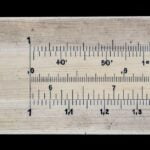Embark on an exciting mathematical adventure with coordinate graphing mystery pictures! Transform ordinary coordinates into captivating images while sharpening essential math skills. This guide provides a comprehensive overview of coordinate graphing, from the basics to creative applications and real-world connections. Let’s turn math into an unforgettable experience!
Deciphering Coordinate Graphs: Where Math Meets Art
Coordinate graphing mystery pictures are like puzzles that magically transform numbers into cool pictures. It’s a mathematical treasure hunt where plotting points on a graph unveils a hidden image, making practicing math engaging and creative. These pictures help learners of all ages grasp coordinate planes, boost problem-solving skills, and even ignite their artistic side.
Unveiling the Mystery: How It Works
These pictures link ordered pairs on a grid. As you connect the dots, a secret image emerges. Different types of mystery pictures cater to various skill levels:
- First Quadrant Fun: Beginners can start with positive coordinates in quadrant I.
- All-Quadrant Adventure: Explore all four quadrants, working with both positive and negative numbers.
- Simple to Complex: Images range from basic shapes to intricate drawings.
- Themed Delights: Discover holiday designs, animals, geometric patterns, and more.
Unlocking the Mystery: A Step-by-Step Guide
- Plot the Points: Locate each ordered pair (e.g., (2,5), (-3,1)) on the graph.
- Connect the Dots: Follow the order of the ordered pairs, drawing lines between them.
- The Grand Reveal: The connected lines unveil the hidden picture.
Finding Your Treasure: Resources for Mystery Pictures
- Free Printables: Websites like Super Teacher Worksheets, Math with Crayons, Rock Your Homeschool, and LoveToKnow offer free printable mystery pictures.
- Paid Resource Packs: Explore Math with Crayons and other educational websites for advanced puzzles, themed collections, and bonus activities.
Beyond the Fun: Educational Benefits
While entertaining, these pictures offer valuable educational benefits:
- Graphing Mastery: Plotting points reinforces understanding of coordinate planes and improves graphing accuracy.
- Spatial Reasoning Power-Up: Connecting the dots enhances spatial awareness and understanding of shapes and their relationships.
- Sparking Creativity: Mystery pictures demonstrate the artistic potential of math, encouraging creativity.
Adapting to All Learners
- Quadrant Control: Beginners can focus on the first quadrant before progressing to others.
- Challenge Levels: Choose puzzles with varying complexity to match each learner’s skill level.
Real-World Connections: Coordinates in Action
Coordinate systems are essential in various real-world applications:
- Reading Maps: Coordinates (latitude and longitude) pinpoint locations on maps.
- GPS Navigation: GPS uses satellite signals and coordinates to determine precise locations.
- Technology and Design: Coordinate systems are fundamental to computer graphics, video game design, and more.
Plotting Points: A Comprehensive Guide
Like a treasure map, a coordinate graph guides us to specific locations using coordinates. The coordinate plane, formed by the intersection of the horizontal x-axis and vertical y-axis, is divided into four quadrants. The origin (0,0) is the central point.
Ordered pairs (x, y) act as “secret codes.” The x-coordinate indicates horizontal movement (positive values move right, negative values move left), while the y-coordinate dictates vertical movement (positive values move up, negative values move down).
For example, (3, 2) means moving three units right and two units up from the origin. (-1, -4) involves moving one unit left and four units down.
Coordinate graphing mystery pictures combine plotting points with connecting the dots, revealing hidden images. This activity enhances understanding of shapes on a coordinate plane and improves spatial reasoning.
Ongoing research explores diverse applications of coordinate graphing, from computer graphics to terrain mapping and data analysis, suggesting further potential uses waiting to be discovered.
Key Points:
| Term | Description |
|---|---|
| Coordinate Graph | A visual representation of points located on a grid using ordered pairs. |
| Coordinate Plane | The grid itself, formed by the intersection of the x and y axes. |
| Ordered Pair | The “secret code” (x,y) that tells us a point’s location. x is the horizontal position, and y is the vertical position. |
| Plotting Points | The act of marking a point on the coordinate plane based on its ordered pair. |
| Mystery Pictures | A fun activity where plotting ordered pairs reveals a hidden image. |
Coordinate Formats: Pinpointing Locations
Coordinates serve as addresses for points on a graph, written as ordered pairs (x, y). The order is crucial, with ‘x’ representing the horizontal distance from the origin and ‘y’ the vertical distance. Moving right from the origin indicates a positive x-coordinate, while moving left signifies a negative value. Similarly, moving up from the origin implies a positive y-coordinate, and moving down indicates a negative value.
Key Points:
- Coordinates are always in the (x, y) format.
- ‘x’ signifies horizontal movement, ‘y’ signifies vertical movement.
Plotting Points: A Step-by-Step Guide
- Find the x-coordinate on the x-axis.
- Move horizontally according to the x-value.
- Find the y-coordinate on the y-axis.
- Move vertically according to the y-value.
- Mark the intersection of your imaginary lines.
Example: Plotting (3, 5)
- Move 3 units right.
- Move 5 units up.
- Mark the point.
Real-World Applications:
- Maps and GPS: Coordinates are essential for navigation.
- Video Games: Coordinates position characters and objects.
- Computer Graphics and Design: Precise element placement relies on coordinates.
- Data Visualization: Coordinates help represent and analyze data trends.
Research suggests expanding applications of coordinate systems in robotics, 3D printing, and other emerging technologies.
Drawing a Coordinate Grid: A Step-by-Step Guide
Creating a coordinate grid is like building a foundation.
- Laying the Foundation: Draw two perpendicular lines (x-axis and y-axis) intersecting at the origin (0,0).
- Marking the Center: Label the origin (0,0).
- Dividing the Map: The axes create four quadrants.
- Adding the Street Numbers: Label the axes with numbers, positive to the right and up, negative to the left and down.
- Finding Your Way: Use coordinates (x, y) to locate points.
Coordinate Graphing and Mystery Pictures:
Mystery pictures use coordinate points to create hidden images, like a connect-the-dots puzzle.
Benefits of Mystery Pictures:
- Improve Graphing Skills: Practice plotting points.
- Sharpen Spatial Reasoning: Develop spatial awareness.
- Enhance Problem-Solving: Identify and correct misplaced points.
- Unleash Creativity: Combine math and art.
How to Make a Mystery Picture:
- Find Coordinate Pairs: Obtain a list of (x,y) coordinates.
- Plot the Points: Mark each point on the grid.
- Connect the Dots: Draw lines in the specified order.
- Reveal the Image: The connected dots form the picture.
Scientists and mathematicians continually explore coordinate systems in various fields. Further research may reveal even more exciting uses of this powerful tool.
Stay updated on market trends with our cryptoquote today section and test your strategy with battleship corner NYT.












